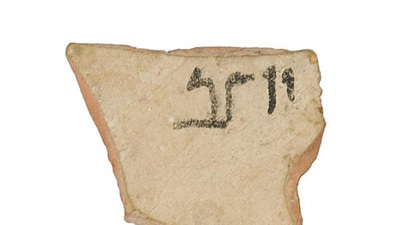Unlike Shavuot, when we celebrate the receiving of the Torah at Sinai, and we spend a good part of the night learning and debating its teachings throughout the night, there is no such custom when it comes to Simchat Torah.
Simchat Torah is the day when we celebrate the Torah by dancing and singing, but not by learning its content. There is no such specific mitzva or custom.
We even keep the reading of the Torah to a minimum. We read the last portion of the Torah (V’zot Habracha), which concludes with Moshe’s death, and repeat it many times so that every male (why not females?) and the children get an “Aliyah”. And immediately, without missing a beat, we start reading Sefer Bereishit (Genesis), telling us about the seven days of Creation.
Even more remarkable is the unapproachability of the text. While dancing with the Torah scrolls, they are carefully covered with velvet mantles, and not once is the actual text shown to the worshippers and dancers in the synagogue. Seemingly, we are not allowed to see what we celebrate!
Even when we actually read from the Torah – not only on this day, but throughout the year – the text is immediately covered once the reading of one section has come to an end.
This is also demonstrated by the fact that once a Torah portion has been read, it disappears again into the scroll, while another one, which was hidden until then, is revealed for a short while in order to be read, only to quickly disappear again when the reading is done.
It is clear that there is a constant attempt to hide the text.
What is the meaning behind all this?
It could not be clearer. Now that we start to read the Torah all over again, after having done so for hundreds of years, we need to be reminded of its absolute holiness, rendering it nearly inaccessible and unapproachable.
Its holiness is of such superiority that we need to receive a stern warning that we are once again undertaking the impossible. Yes, we read it, but we are simultaneously told that there is no way to fathom this text. All we can do is read its outer layer but never “das Ding an sich” (the “thing-in-itself”), to use Immanuel Kant’s famous observation.
The book will forever remain a closed work. Only for a moment one can look into its text, but even then, we can only catch a glimpse of its outer layer; otherwise, we get burned. Gazing at the Torah too much, or for too long, will leave the reader paralyzed. Only in printed form, in book-form, and with the help of a great amount of sometimes staggering commentaries can one approach the text. And even then, it does not allow us to see “das Ding an sich”.
It is solely through these commentaries that the text can be brought down to the level of mortals. Only when the Torah is partially stripped of its heavenly fire and made “user friendly” is there a slight chance that one may understand some of its contents.
This is also the reason why Jews only start reading the Torah but never finish it. For thousands of years, on the day of Simchat Torah we begin all over again but we actually never complete it. Why? Because even our greatest Torah scholars once again come to the conclusion that they bitterly failed the previous year to get to its core.
After all, even when we only start reading the first words of the creation chapter, we already get stuck, unable to understand the actual deeper meaning. The truth is that we can never really get beyond that point. True, we keep on reading the entire Torah throughout the year but what applies to the first words, applies to all its words. It remains mission impossible.
And that is exactly the point. To be reminded that the greatness of the Torah does not rest on its comprehension but on its mysterious nature. Every week while reading another portion, we are hit in the face by this truth and we are only able to slightly lift its veil. And that makes it exciting and more than joyous.
While in the non-Jewish world, the whole point is to finish a book, in Judaism we are all just perpetual beginners.
This explains why, unlike the week of Sukkot, in which we hold our lulavim and circle around a Sefer Torah that has been placed on the bimah/tevah (a raised platform from which the Torah is read in a synagogue), on Simchat Torah we carry the Torah scrolls and circle around an empty bimah/tevah. This time it is not the Torah that stands at the center of our lives, but the Great and Invisible God who is considered to be the Author, Who stands at its center. Just as a spinning cylinder pulls all its elements to its very center, so the Torah must be drawn more and more to its center: God.
This, we believe, is another serious warning to all those who see the Torah as a literary work that can be studied like Shakespeare’s Hamlet, like a chapter out of humanity’s great cultural heritage, or as a piece of the Israelites’ early history.
The moment it is disconnected from God, it loses its source of spirituality and its text will slowly die, like a human succumbing to a lack of oxygen. While studying, even only its outer layers, the student needs to be constantly reminded that this text is Divine and can, therefore, only be approached in awe and holiness. The student must hear the voice of God behind the text. It is, as Abraham Joshua Heschel once wrote, “holiness in words.”
Though its words seem straightforward and its style transparent, obscure meanings and unimagined intimations are hidden in its simple words. Just as God is untouchable, so is His text. While studying the text, the students must have God standing at the center of their lives.
Now that we will once again start reading the Torah on Simchat Torah, we can approach it only with awe and realize that even with all our knowledge, the Torah is hidden behind a mantle of divinity, which is the source of all life.



